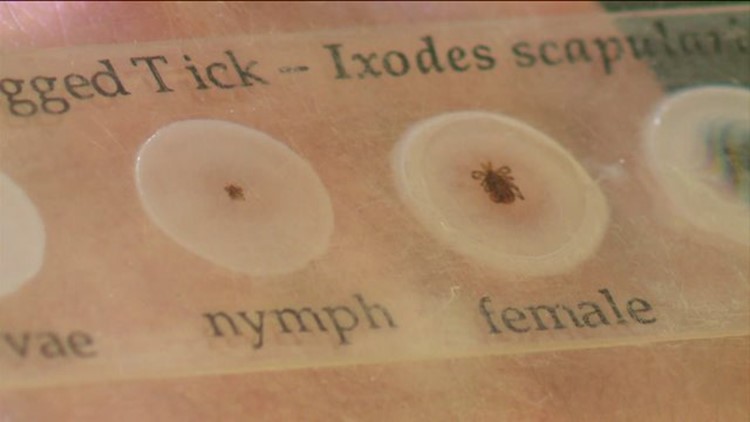NEW HAVEN -- A small percentage of ticks in Branford and Bridgeport have tested positive for the Powassan virus, for which there is currently no known cure.
According to the Centers for Disease Control and Prevention, Powassan virus is transmitted to humans by infected ticks. Approximately 60 cases of Powassan virus were reported in the United States over the past 10 years. Most cases have occurred in the Northeast and Great Lakes region.
Signs and symptoms of infection can include fever, headache, vomiting, weakness, confusion, seizures, and memory loss. Long-term neurologic problems may occur. There is no specific treatment, but people with severe Powassan virus illnesses often need to be hospitalized to receive respiratory support, intravenous fluids, or medications to reduce swelling in the brain.
"Just about any wooded area of Connecticut that you venture into, there's a chance of picking up ticks,"said Dr. Theodore Andreadis of the DEEP's Connecticut Agricultural Experiment Station. "If you're going to be out hiking, camping, spending any amount of time in a wooded area with a lot of brush, you really want to make sure you check yourself when you come out of the area. That's the most effective method."
Scientists will step up surveillance in the affected areas but are reminding hikers and campers to properly protect themselves against ticks.
For more information, visit http://www.cdc.gov/ticks/index.html.
And here are some tips from the National Pest Management Association how how to prevent tick bites and related illnesses.
- Wear long pants, long-sleeved shirts and closed-toe shoes when outdoors, especially in wooded areas or tall grasses.
- Wear light colored clothing, which makes it easier to spot ticks and other insects.
- Wear a bug spray containing at least 20% DEET when outdoors, and reapply as directed on the label.
- When hiking, stay in the center of trails, away from vegetation.
- Take steps to keep your own yard tick-free. Keep grass cut low and remove weeds, woodpiles and debris, which can attract ticks and other pests.
- If you find a tick on yourself or a family member, remove it with a slow, steady pull so as not to break off the mouthparts and leave them in the skin. Then, wash your hands and the bite site thoroughly with soap and water. Ticks should be flushed down a toilet or wrapped in tissue before disposing in a closed receptacle.
- If you find a tick in your home or suspect you have ticks on your property, contact a licensed pest professional who can inspect and recommend a course of action to reduce or eliminate ticks on your property.



